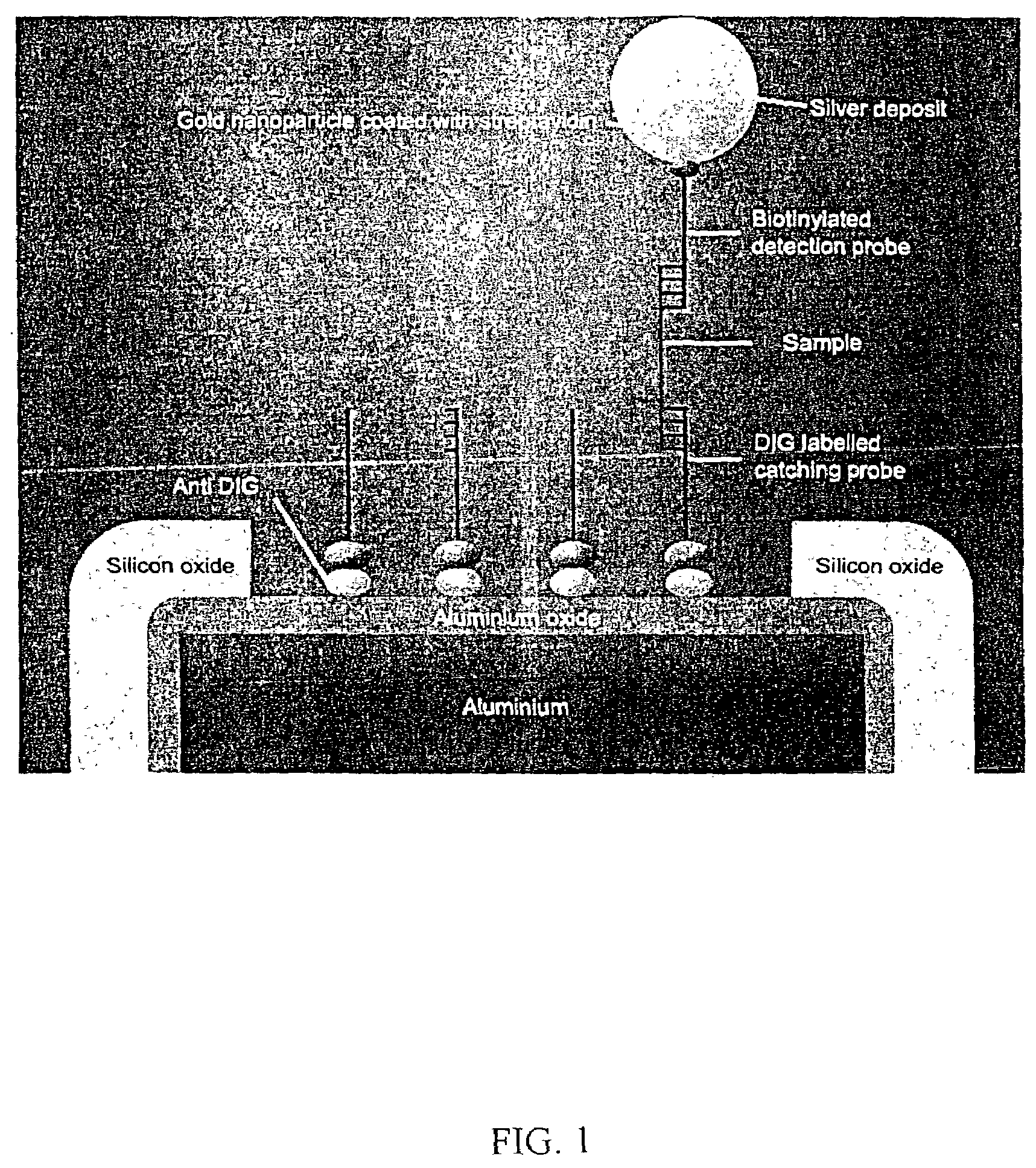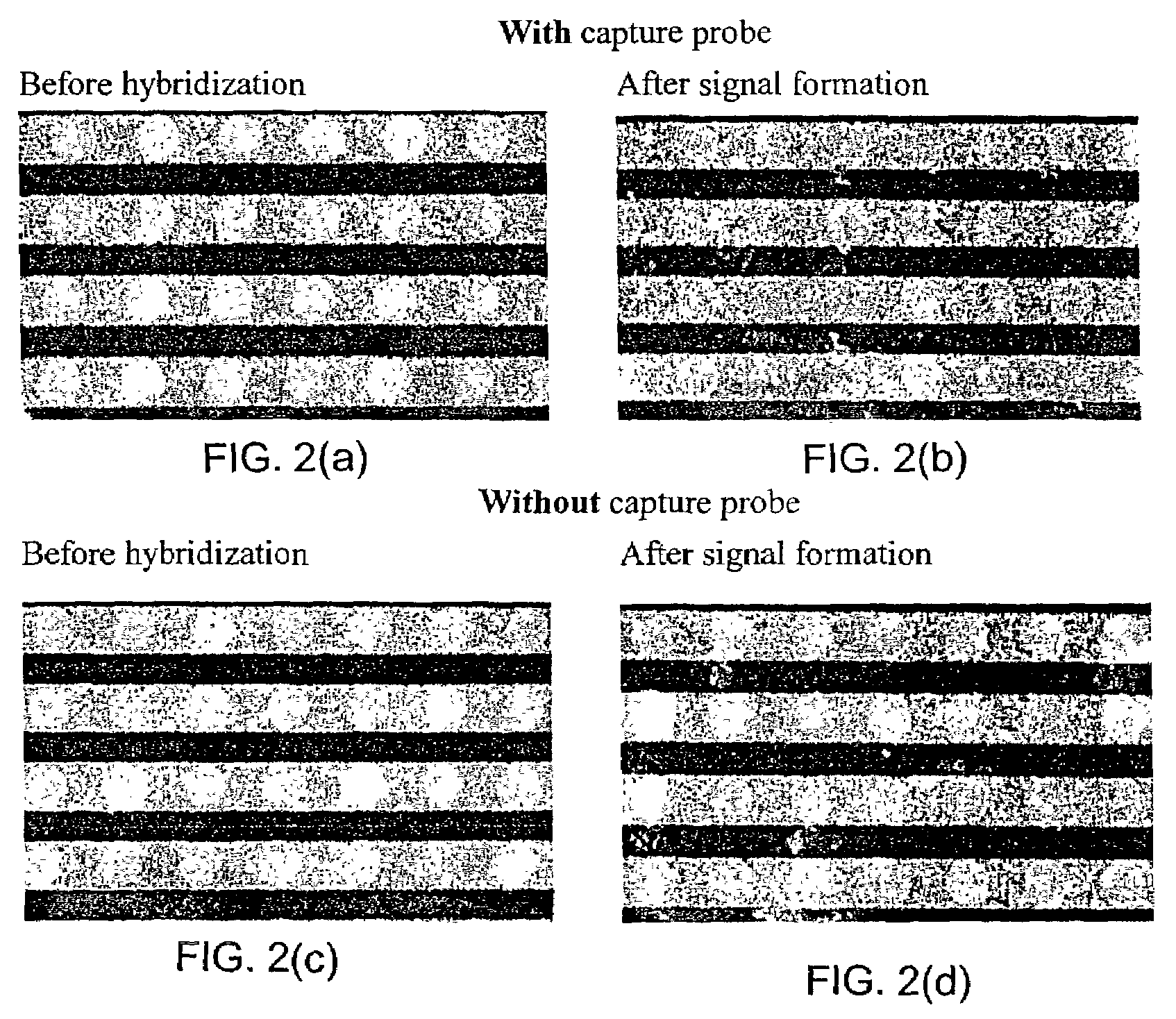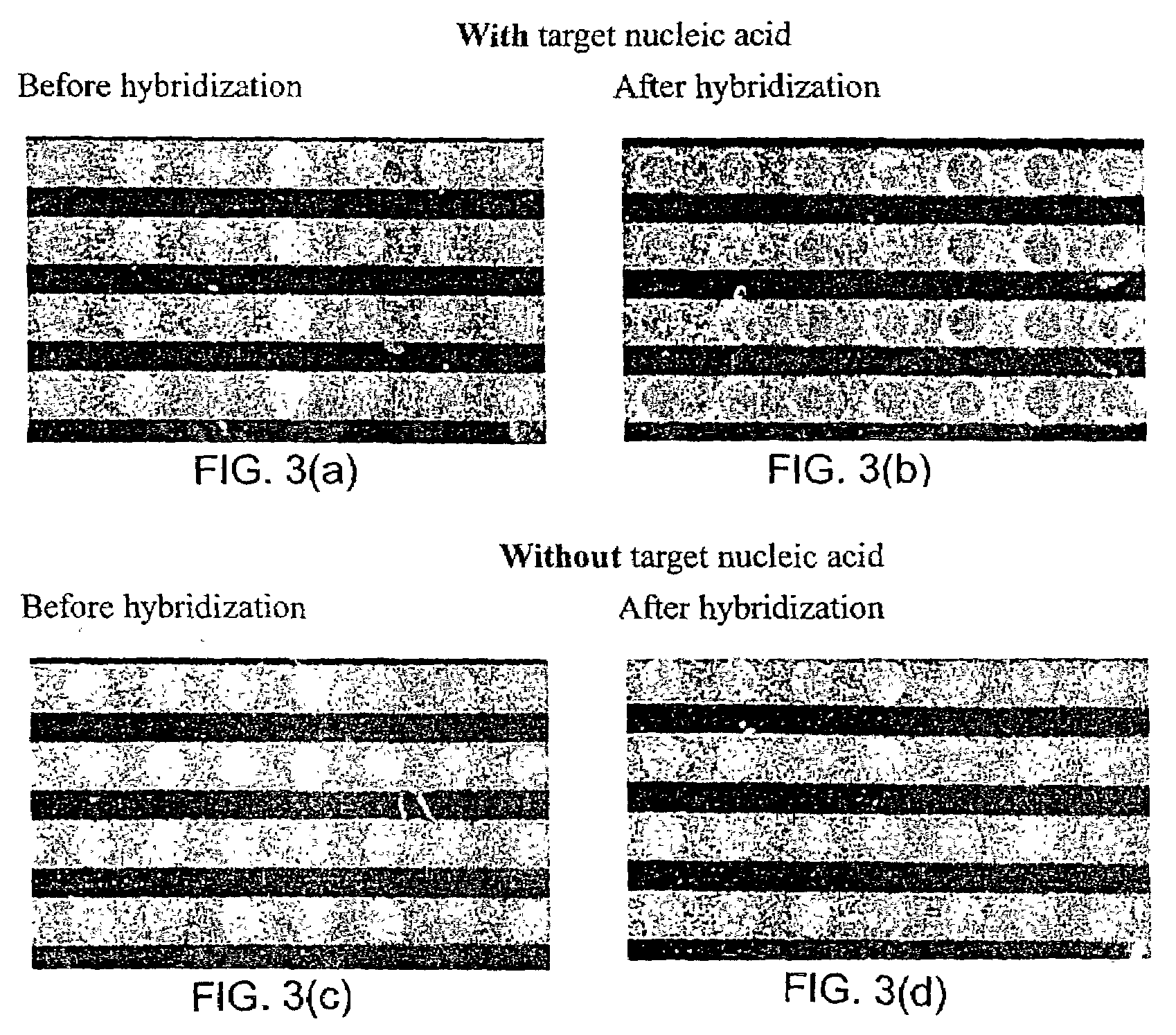Apparatus and methods for detecting DNA in biological samples
a biological sample and apparatus technology, applied in the field of apparatus and methods for detecting dna in biological samples, can solve the problems of difficult manipulation of molten agarose gel, adverse effects on subsequent reactions and detection, and use of agarose, so as to reduce background signal and increase the convenience of manufacture
- Summary
- Abstract
- Description
- Claims
- Application Information
AI Technical Summary
Benefits of technology
Problems solved by technology
Method used
Image
Examples
example
[0044]The following example is of a protocol for detecting β-actin DNA in a sample. The hybridization steps are electronically assisted, preferably by pulse hybridization using applied pulses, though continuously applied current is also possible. Pulse hybridization, however, limits damage to the chip and results in a higher signal. Typical hybridization conditions include for the hybridization of the sample DNA to the capture probes the application of 10 second pulses (13 microamps) followed by a 3 second pause repeated for 8 minutes (i.e. a total of 48 pulses. For the hybridization of the detection probe to the captured sample DNA, the same conditions may be used, but for only 3 minutes (i.e. 18 pulses).[0045]1. Anti-DIG is diluted 100-fold with 1×PBS (phosphate-buffered saline), pH 7.4.[0046]2. 50 μl of the diluted anti-DIG is added onto an alumina-coated chip and is incubated at 41° C. for 2 hours.[0047]3. The anti-DIG solution is discarded and the chip is washed 3× with 80 μl 1...
PUM
| Property | Measurement | Unit |
|---|---|---|
| pH | aaaaa | aaaaa |
| electrical | aaaaa | aaaaa |
| heat conducting | aaaaa | aaaaa |
Abstract
Description
Claims
Application Information
 Login to View More
Login to View More - R&D
- Intellectual Property
- Life Sciences
- Materials
- Tech Scout
- Unparalleled Data Quality
- Higher Quality Content
- 60% Fewer Hallucinations
Browse by: Latest US Patents, China's latest patents, Technical Efficacy Thesaurus, Application Domain, Technology Topic, Popular Technical Reports.
© 2025 PatSnap. All rights reserved.Legal|Privacy policy|Modern Slavery Act Transparency Statement|Sitemap|About US| Contact US: help@patsnap.com



